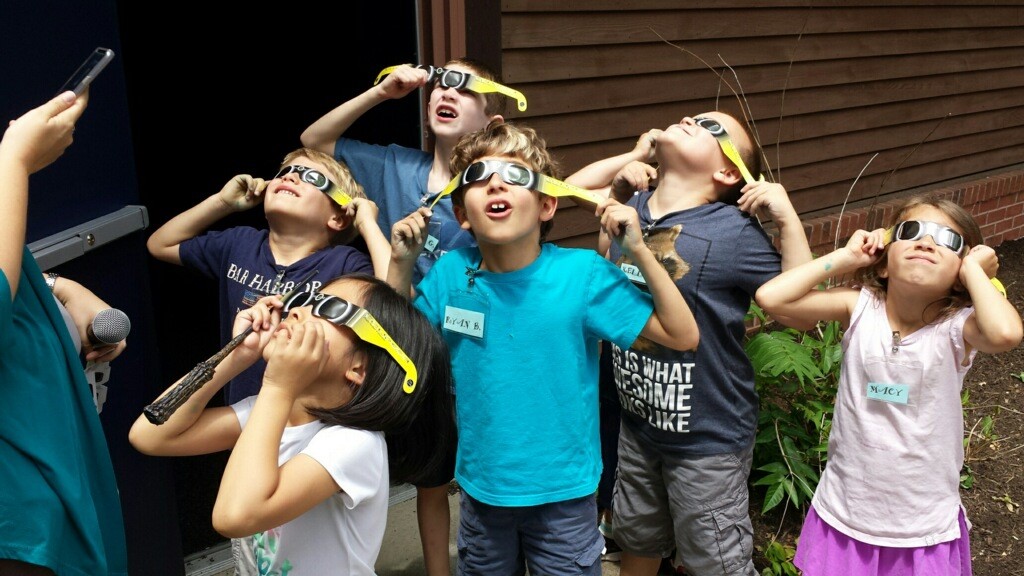Solar Eclipses: What to Expect and How to Safely Observe Them
April 25, 2023
Posted by Lake Erie Nature and Science Center

Northeast Ohio will be treated to not one, but two solar eclipse events over the next year: a partial solar eclipse on October 14, 2023 and a total solar eclipse on April 8, 2024.
What is a solar eclipse? Well, the moon orbits Earth approximately every 27 days. A solar eclipse is the cosmic coincidence when the moon passes exactly between the Earth and the Sun, thereby casting a shadow onto Earth and blocking our view of the Sun.
For the partial annular eclipse this October, we will see about 33% of the Sun covered by the moon. In April 2024, the path of totality will cross North America, passing over Mexico, the United States, and Canada. In Northeast Ohio, we will see the moon completely cover the sun, revealing the Sun’s outer atmosphere otherwise known as the solar corona.
You will notice the sky become quite dark and other stars and planets will be visible. Animals will behave as if it were dusk. Deer will be active, birds will head towards the trees for shelter, and nighttime insects will begin to make noise. The experience of totality will be all around you, so make sure to take it all in.
Here are a few ways to view the partial and total solar eclipses:
Eclipse glasses
Eye protection is extremely important when viewing a partial or total solar eclipse. To safely observe an eclipse, you must wear eclipse glasses or number 14 welder’s glass.
Do not look at the Sun through a camera lens, telescope, binoculars, or any other optical device while wearing eclipse glasses — the concentrated solar rays will burn through the filter and cause serious eye injury.
A common myth: You do not need to wear eclipse glasses all day. Only wear them when you are looking directly at the Sun.
Pinhole projectors
Another way to view an eclipse is to use a pinhole projector, which has a small opening (for example, a hole punched in an index card) and projects an image of the Sun onto a nearby surface. With the Sun at your back, you can then safely view the projected image.
Colander
Take your kitchen colander outdoors and observe its shadows on the ground. The circular holes of your colander will project crescent shapes onto the ground during the partial phases of a solar eclipse.
As one of two public-access planetariums in Cuyahoga County, Lake Erie Nature & Science Center will offer educational programs in preparation for the partial and total eclipses. Stay tuned for more information at www.lensc.org/planetarium.

